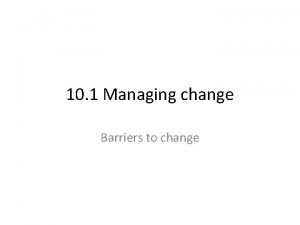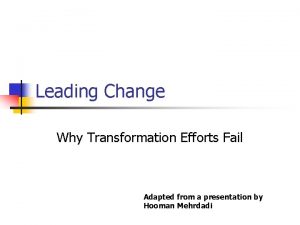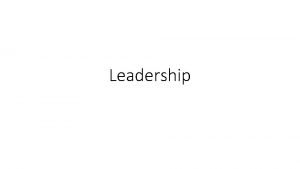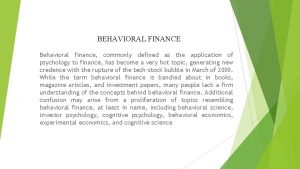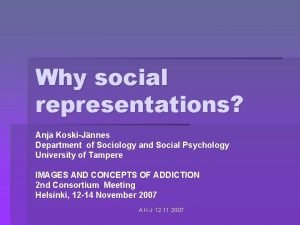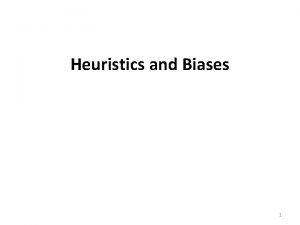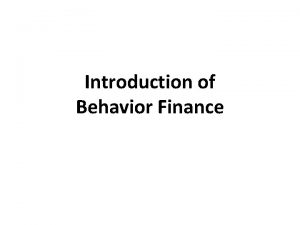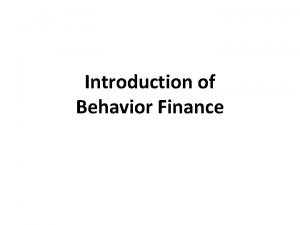Change Management Kotter Anchoring and incorporating changes into









- Slides: 9

Change Management Kotter – Anchoring and incorporating changes into the culture Ideensammlung zur Erstellung einer Präsentation 1 Raimund Hudak

Change Management Ø It is not the strongest of the species that survive, nor the most intelligent, but the one most responsive to change. Charles Darwin 2 Raimund Hudak

Krise als Chance 3 Raimund Hudak

Steps in the Change Process 1. Establishing a sense of urgency 2. Creating the guiding coalition 3. Developing (collaboratively) a vision and strategy 4. Communicating the change vision 5. Empowering broad-based action 6. Generating short-term wins 7. Consolidating change and producing more change 8. Anchoring new approaches in the culture (John Kotter, 1996) 4

Background • At this point, the focus is on anchoring new approaches into the culture for sustained change. • New practices need to be deeply entrenched to remain there, especially as these are composed of norms of behavior (defining appropriate attitudes) and shared values (defining what is important). • Every individual who joins an organization is indoctrinated into its culture (even without realizing it), and its social forces and group conformity can be incredibly strong. Changes can be incredibly difficult to ingrain. • This is why cultural change is Step 8, not Step 1. It needs to build slowly from the edges to succeed. 5 Raimund Hudak

Background • Remember the Three C’s of Culture – – Clear, Consistent and Comprehensive. • Kotter outlines a checklist for Culture: – – – Cultural change should comes last, not first You must be able to prove that the new way is superior to the old The success must be visible and well communicated You will lose some people in the process You must reinforce new norms and values with incentives and rewards – including promotions – Reinforce the culture with every new employee 6 Raimund Hudak

8. Anchoring new approaches in the culture • • • Make It Stick. Articulate the connections between the new behaviors and organizational success, and develop the means to ensure leadership development and succession. New practices must grow deep roots in order to remain firmly planted in the culture. Culture is composed of norms of behavior and shared values. These social forces are incredibly strong. Every individual that joins an organization is indoctrinated into its culture, generally without even realizing it. Its inertia is maintained by the collective group of employees over years and years. Changes – whether consistent or inconsistent with the old culture – are difficult to ingrain. 7 Raimund Hudak

Successful Change Management • Conclusion – Kotter’s 8 Step Process for Leading Change is a strong framework for driving transformation in an organization. – From a Change Agent, through to a Guiding Coalition, and finally through to an ingrained organizational culture, this can guarantee a higher success rate in building a more nimble, intelligent and reactive organization to tackle the rapidly changing environments we face today. 8 Raimund Hudak

8. Anchoring new approaches in the culture • • Tradition is a powerful force. We keep change in place by creating a new, supportive and sufficiently strong organizational culture. A Guiding Coalition alone cannot root change in place no matter how strong they are. It takes the majority of the organization truly embracing the new culture for there to be any chance of success in the long term 9 Raimund Hudak

